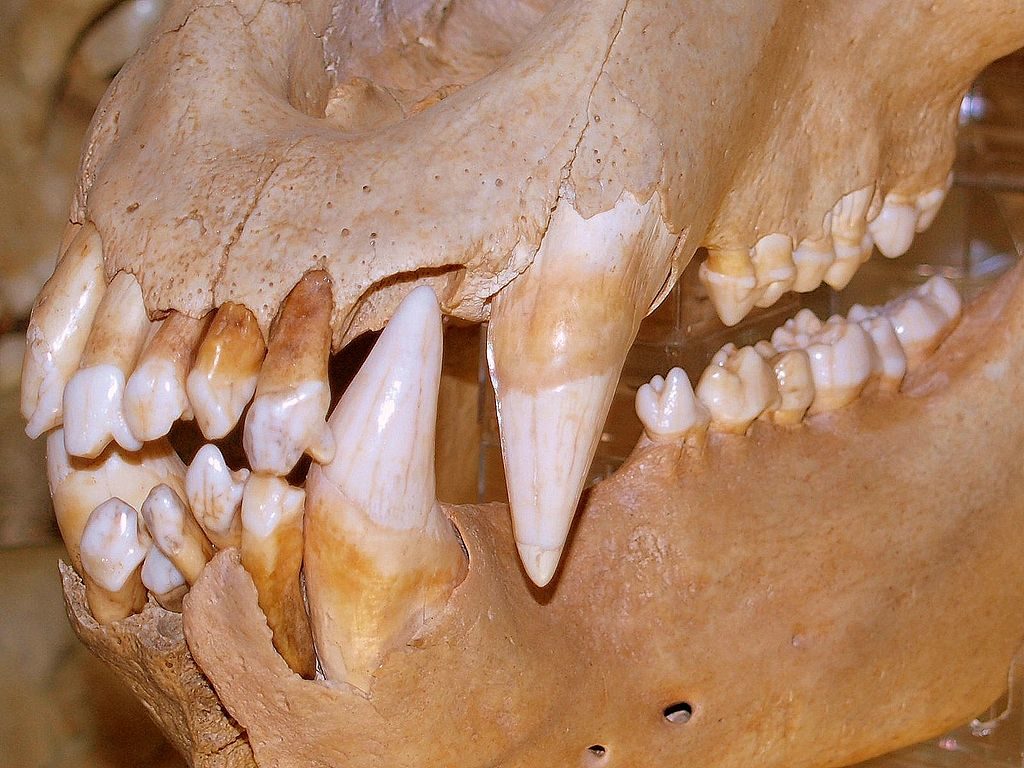Modern bears, while typically thought of as carnivores, actually have a wide variety of dietary preferences. Some eat only meat while others are omnivores, meaning that they eat both meat and vegetation. Cave bears (Ursus spelaeus), an extinct bear species from Europe, are thought to be omnivorous. However, scientists assumed this based on the diets of currently living brown and black bears. A recent study found that cave bears may have been almost purely herbivorous, meaning they do not eat meat, when compared to other animal diets from that same time period (~24,000 years ago).
The method used in the paper measured the amount and spread of nitrogen-15 and carbon-13 isotopes found in 323 cave bear fossils to those of other European mammals from the same timespan. Food and water contains different levels of nitrogen-15 and carbon-13 and, when consumed, these isotopes are stored in bodily tissues such as bone and collagen. So, even though there are no living cave bears, their bones can tell us a lot. Both nitrogen-15 and carbon-13 are stable, meaning that they do not change over large amounts of time, and reliably represent the isotopes found in the food sources of the animals from which they were collected. For instance, primarily plant-eating animals (e.g. deer) will have different ratios of nitrogen-15 and carbon-13 in their bones than animals that eat meat (e.g. lions).
To understand if two things are related, scientists visualize the data using a “scatter plot.” Each point on a scatter plot represents a coordinate made up of a pair of numbers, like on a map. One number in the pair comes from one dataset and one number in the pair comes from the other dataset. If there is a pattern in how the points fall on the map, we may be able to assume they are related. If the points are randomly scattered around, then there may not be a relationship. By plotting the nitrogen-15 levels against carbon-13 levels for each animal to see where the points fall, scientists can estimate how similar any two diets are. The way scientists know this measurement is useful is because previous research showed that nitrogen-15 found in bones is directly related to the type of food eaten by an animal
Surprisingly, cave bear diets did not appear similar to those of known carnivores (e.g. cave hyenas and wolves). They were much closer to herbivores (e.g. deer and horses). Each group of animals on the scatter plot represented a particular environment or dietary preference. The nitrogen-15 levels in the bones of cave bears were more similar to currently living herbivores, so perhaps these bears didn’t eat as much meat as we thought. Prior to this publication, tooth and jaw anatomy were the main source of evidence for the diet of extinct animals. A similar method was tried in 2008 and it gave the first evidence that cave bears might have preferred plants over meat; the most recent article gave further support for herbivorous bears.
The authors suspect that the diet of cave bears may have been a factor that lead to their extinction, as they were unable to adapt their diet to a changing climate. An omnivorous diet is more resistant to environmental changes as it does not focus on one form of nutrition. This means that once the plant life that composed most of the cave bear’s diet began to die out, they had fewer options for food. The climate during the Late Pleistocene (126,000 – 12,000 years ago) was volatile, and the cave bear population declined during the last ice age. This study offers one more explanation for why cave bears went extinct, like the mammoths, giant ground sloths, and other large animals of the time.


